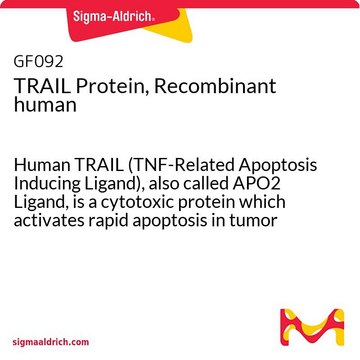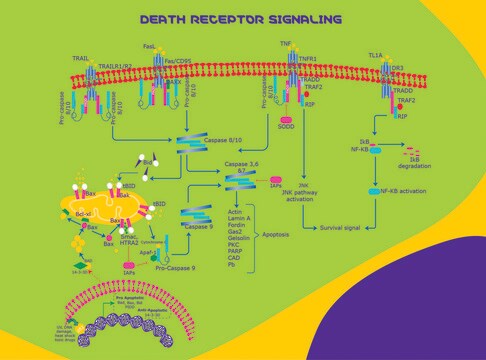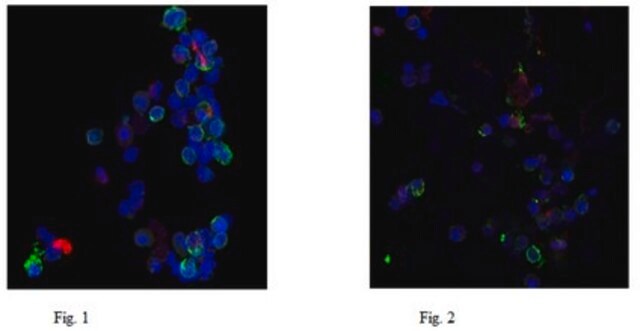T5694
TRAIL human
recombinant, expressed in NSO cells, >97% (SDS-PAGE), lyophilized powder
Sinônimo(s):
Apo2 Ligand, Apo2L, TL2, TNF-related apoptosis-inducing ligand
About This Item
Produtos recomendados
fonte biológica
human
Nível de qualidade
recombinante
expressed in NSO cells
descrição
N-terminal 6X histidine-tagged extracellular domain
Ensaio
>97% (SDS-PAGE)
forma
lyophilized powder
peso molecular
24 kDa by SDS-PAGE
predicted mol wt ~21 kDa
técnica(s)
cell culture | mammalian: suitable
Impurezas
endotoxin, tested
nº de adesão UniProt
temperatura de armazenamento
−20°C
Informações sobre genes
human ... TNFSF10(8743)
Procurando produtos similares? Visita Guia de comparação de produtos
Aplicação
Ações bioquímicas/fisiológicas
forma física
Nota de análise
Código de classe de armazenamento
11 - Combustible Solids
Classe de risco de água (WGK)
WGK 3
Ponto de fulgor (°F)
Not applicable
Ponto de fulgor (°C)
Not applicable
Certificados de análise (COA)
Busque Certificados de análise (COA) digitando o Número do Lote do produto. Os números de lote e remessa podem ser encontrados no rótulo de um produto após a palavra “Lot” ou “Batch”.
Já possui este produto?
Encontre a documentação dos produtos que você adquiriu recentemente na biblioteca de documentos.
Nossa equipe de cientistas tem experiência em todas as áreas de pesquisa, incluindo Life Sciences, ciência de materiais, síntese química, cromatografia, química analítica e muitas outras.
Entre em contato com a assistência técnica







